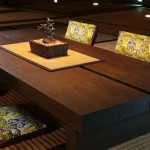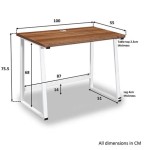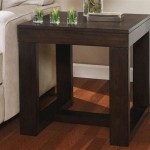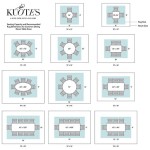Understanding Drop Leaf Table Hinges: Functionality, Types, and Selection
Drop leaf tables, characterized by hinged leaves that can be folded down to save space or raised to expand the surface area, represent a classic design element in furniture. The functionality of these tables hinges, quite literally, on the quality and design of the drop leaf table hinges. These specialized hinges are not merely connectors; they are integral to the table's stability, usability, and longevity. This article aims to provide a comprehensive overview of drop leaf table hinges, exploring their function, different types, considerations for selecting the appropriate hinge for a given project, and the factors contributing to their overall performance.
A drop leaf table hinge performs the fundamental task of connecting the table's main surface to the drop leaves. However, the design must also allow for smooth and secure movement. When the leaf is in the upright position, the hinge should provide sufficient support to maintain a level and stable surface. Conversely, when the leaf is lowered, the hinge must allow the leaf to fold down seamlessly, ideally flush with the table's apron or side panel. This dual functionality requires a hinge design that considers both load-bearing capacity and range of motion.
The selection of the correct drop leaf table hinge is paramount for ensuring the table's proper operation and structural integrity. A poorly chosen hinge can lead to sagging leaves, difficulty in raising or lowering the leaves, and premature failure of the joint. Factors like the weight and thickness of the leaves, the intended use of the table, and the desired aesthetic all influence the hinge selection process. Furthermore, the installation method and available space within the table's construction must be carefully considered.
Key Point 1: Types of Drop Leaf Table Hinges
Several distinct types of drop leaf table hinges are available, each with its own advantages and disadvantages. Understanding the characteristics of each type is crucial for making an informed decision.
Butterfly Hinges: Butterfly hinges, also known as table hinges or rule joint hinges, are perhaps the most traditional and widely used type for drop leaf tables. They feature two leaves, each shaped like a butterfly's wing, that interlock when the table leaf is in the upright position. The interlocking design provides a strong and stable connection, distributing the weight evenly across the joint. Butterfly hinges are typically mortised into both the table's main surface and the drop leaf, creating a flush and seamless appearance. The mortising process, however, requires precision and skill to ensure a proper fit and prevent weakening the surrounding wood.
Rule Joint Hinges: Rule joint hinges are a specialized form of butterfly hinge specifically designed for tables with a rule joint. A rule joint is a curved edge that is formed where the table's main surface meets the drop leaf. This curved edge allows the leaf to pivot smoothly and sit flush when lowered. Rule joint hinges are manufactured with a matching curved profile that complements the rule joint, ensuring a tight and aesthetically pleasing fit. These hinges are more complex to install than standard butterfly hinges due to the need to precisely match the curvature of the joint.
Piano Hinges: Piano hinges, also known as continuous hinges, run the entire length of the drop leaf. While less common than butterfly hinges, they offer exceptional strength and stability, particularly for larger or heavier leaves. The continuous design distributes the weight evenly along the entire joint, reducing stress points. Piano hinges are typically surface-mounted, meaning they are attached to the surface of the table and leaf rather than being mortised in. This simplifies installation but may result in a less aesthetically pleasing appearance compared to mortised hinges. Furthermore, the visible hinge may not be the desired look for some table designs.
Invisible Hinges: Invisible hinges, also known as concealed hinges, are designed to be completely hidden when the table leaf is in either the upright or lowered position. These hinges offer a clean and minimalist aesthetic, making them a popular choice for modern furniture designs. Invisible hinges are typically more complex to install than other types, requiring precise mortising and alignment. They may also have a lower load-bearing capacity compared to butterfly or piano hinges, making them unsuitable for very heavy leaves.
Other Specialized Hinges: In addition to the common types, several other specialized hinges may be suitable for drop leaf tables depending on the specific design and requirements. These include hinges with integrated locking mechanisms, hinges with adjustable tension, and hinges designed for specific materials or applications. Consulting with a hardware specialist or experienced furniture maker is recommended when considering these less common options.
Key Point 2: Factors Influencing Hinge Selection
Several factors must be considered when selecting the appropriate drop leaf table hinge for a given project. These factors include the weight and size of the leaf, the material of the table and leaf, the intended use of the table, and the desired aesthetic.
Weight and Size of the Leaf: The weight and size of the drop leaf are primary determinants of the hinge's load-bearing capacity. Heavier leaves require stronger hinges made from more robust materials. Larger leaves may also benefit from multiple hinges spaced along the length of the joint to distribute the weight evenly. The hinge manufacturer's specifications should be carefully consulted to ensure that the selected hinge is rated for the intended load.
Material of the Table and Leaf: The material of the table and leaf can influence the choice of hinge material and installation method. For example, hinges made from stainless steel or brass are often preferred for tables made from hardwoods or outdoor furniture due to their resistance to corrosion. The method of attaching the hinge will also vary depending on the material. Screws are typically used for wood, while bolts or adhesives may be required for other materials.
Intended Use of the Table: The intended use of the table can also affect hinge selection. A table intended for occasional use may not require as robust a hinge as a table that will be used frequently and subjected to heavy loads. Tables intended for outdoor use require hinges made from weather-resistant materials. Consider how often the leaves will be raised and lowered and the potential for accidental bumps or impacts.
Desired Aesthetic: The desired aesthetic of the table is another important consideration. Some hinges, like invisible hinges, are designed to be completely hidden, while others, like butterfly hinges, are meant to be visible and contribute to the table's overall design. The finish of the hinge should also be considered to complement the table's overall style. Brass, antique bronze, and polished chrome are common finish options.
Available Space and Installation Method: The available space within the table's construction and the ease of installation are practical considerations. Some hinges require more space than others, particularly for mortising. The installation method should also be considered based on the available tools and skill level. Surface-mounted hinges are generally easier to install than mortised hinges.
Key Point 3: Installation and Maintenance of Drop Leaf Table Hinges
Proper installation and regular maintenance are crucial for ensuring the long-term performance and reliability of drop leaf table hinges. A poorly installed hinge can lead to premature failure, while neglected maintenance can result in squeaking, binding, or corrosion.
Installation Techniques: The installation technique will vary depending on the type of hinge selected. Mortised hinges require precise mortising to ensure a flush and secure fit. Measurements must be accurate, and the mortise should be carefully chiseled or routed to the correct depth and width. Surface-mounted hinges are generally easier to install, but care should be taken to align the hinge properly and use the correct size and type of screws. Always pilot drill screw holes to prevent splitting the wood.
Alignment and Adjustment: Proper alignment is critical for the smooth operation of drop leaf table hinges. Misalignment can cause the leaf to bind or sag, putting undue stress on the hinge. After installation, the hinge should be carefully inspected to ensure that it is properly aligned. Some hinges have adjustable features that allow for fine-tuning the alignment. Adjustments should be made gradually and carefully to avoid damaging the hinge or the surrounding wood.
Lubrication and Cleaning: Regular lubrication and cleaning are essential for maintaining the smooth operation of drop leaf table hinges. A small amount of lubricant, such as silicone spray or light machine oil, should be applied to the hinge's moving parts periodically. The hinge should also be cleaned regularly to remove dust, dirt, and debris that can accumulate and cause friction. Avoid using harsh chemicals or abrasive cleaners, as these can damage the hinge's finish.
Tightening Screws: Over time, the screws that hold the hinge in place may loosen. Loose screws can cause the hinge to wobble and eventually fail. Regularly inspect the screws and tighten them as needed. If the screw holes are stripped, they may need to be repaired using wood glue and toothpicks or dowels. Consider using longer screws for better grip if the wood is soft.
Inspection for Wear and Tear: Regularly inspect the hinges for signs of wear and tear, such as cracks, bends, or corrosion. Damaged hinges should be replaced immediately to prevent further damage to the table. Early detection and replacement of worn hinges can save more extensive repairs later.
By understanding the different types of drop leaf table hinges, considering the factors that influence hinge selection, and following proper installation and maintenance procedures, it is possible to ensure the long-term functionality, stability, and aesthetic appeal of drop leaf tables.

Drop Leaf Hinges For Straight Edges Yellow Zinc Plated Rockler Woodworking And Hardware

Drop Leaf Table Support Paxton Hardware

Black Hinge Drop Leaf Hardware Kits

How To Install A Drop Leaf Hinge Woodworking Blog S Plans

Drop Leaf Table Hinge Restaurant Chairs By M Deitz And Sons Inc

Drop Leaf Table Hinge And Hardware Kits

Drop Leaf Hinges 1 4 X 2 7 8 Paxton Hardware

Drop Leaf Hinges For Shaped Edge Brass Plated Rockler Woodworking And Hardware

Drop Leaf Table Hardware Detail Hinge Style I Want Bar And Stools Pub Sets

Selby Furniture Hardware H278l Drop Leaf Table Hinge Each Broe Hut








